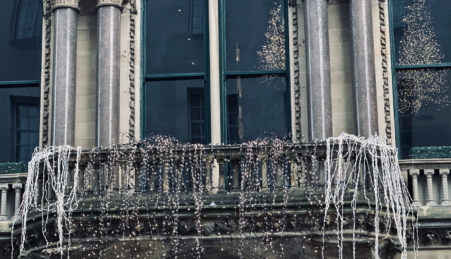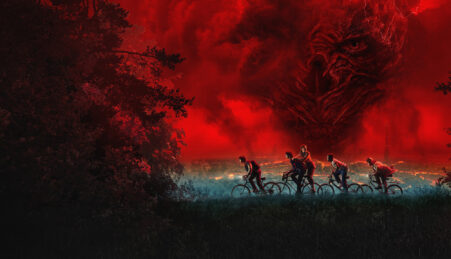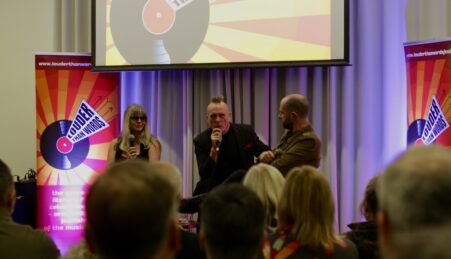By Pierangelly Del Rio
Photography: Delia-Adriana Tanase
In the middle of the eighties, rave culture was becoming part of a new youth movement across Europe. An euphoric “raving society”, which proposed electronic as a competition for rock and mixed music, hedonistic ideals of love, peace, and unity, brought together an entire generation. Such culture emerged in an era marked by unemployment and social division. The traces left behind by the movement, have been engulfed in a cloud of mysticism that our millennial and Z generations can’t fully comprehend. Information can be found about the legendary rave scene of London and even cities in America. ‘Bring a Rave Memory’ aimed to put the Mancunian rave scene into the spotlight, by celebrating clubbers who experienced the phenomenon between 1985 and 1995.

Organised in association with the RAH! Programme, Bring a Rave Memory welcomed attendees at 70 Oxford Street to the sound of rave music in the background. Dr Beate Peters, expert in the rave scene and cofounder of the Lapsed Clubber project, said the aim of the event was to give attendees an opportunity to engage with the project by sharing their rave experiences, rather than hearing the same anecdotes in the media. Lapsed Clubber highlights a decade of Greater Manchester’s rave landscape through a memory map, which collects ravers’ memories online. All attendees were invited to do so, and, to get them in the mood, the event started with a panel discussion with three former clubbers who experienced the scene at its highest peak.

Head of Audio at Warner Brothers in Wilmslow, Suddi Raval, got involved in the scene after being obsessed with Acid and House music when he was a kid. He recalled the sense of community, which characterised nightclubs such as The Haçienda.
“I met people there whom I became immediately friends with and are still some of my best friends now. This wasn’t the drugs, we just felt so close and so connected. We all met in a daytime. The kind of community spirit of rave and dance music was amazing. It was kind of being in a secret gang.”

Kerri Farnsworth, leader of major award-winning urban regeneration enterprise and former music industry worker, explained that this sense of community was stronger in an era in which mobile phones or the internet weren’t the norm.
“Finding people who liked the same things you liked was a lot harder. And you were going to these spaces because you were able to listen to the music, let the barriers down and you wouldn’t let prejudice get in your way. Initially people just went for the music, just to have a good time.”

More than fun and entertainment, for some clubbers the rave scene was an act of political resistance in the face of Thatcher’s conservative politics. Writer and academic, Simon Morrison stressed that, in spite of people not associating rave with politics, the movement was inevitably linked to them. “It’s about transgression, putting things into your body that are illegal. You’re breaking into buildings that none else has been to. How is that not political? Thatcher said in 97 ‘there’s no such a thing as society’. But the rave scene found a society, a community on the dance floor. They knew we are defined by our connections with people.”

Following the discussion, Abigail Ward, co-founder of Manchester Digital Music Archive introduced the Lapsed Clubber online map. Launched in partnership with Manchester Metropolitan University, the map allows users to record their rave experiences in sixty seconds and pin the memory in online maps where they actually happened.
She said, “I started having some meetings with Beate and we discovered we just couldn’t stop talking. The meeting went on for a very long time and were both very interested in mapping and oral history.”
“Beate has been researching rave culture for years and she’s is always looking for new ways of capturing people’s experiences, and is the same for us at the achieve. The stories as just as important, or possibly more important to me than the actual images and sounds.”

The combination of their work resulted in the online audio heritage map, funded by the Heritage Lottery Fund. The project it’s experimental, and still in the stage of testing. Abigail demonstrated how the map works, by recording a memory herself and playing a memory pinned to the nightclub The Stag that narrated an encounter with the legendary music producer Trevor Horn. She encouraged attendees to get together, host parties to bring back rave memories and upload the to the map. Rules were outlined, as every uploaded memory will be subjected to regulation.
After this demonstration, attendees were invited to gather around the computers and record their rave memories. Although many memories were recorded, there’s still chance to get involved in the project by visiting the Manchester Digital Music Archive.











Leave a reply